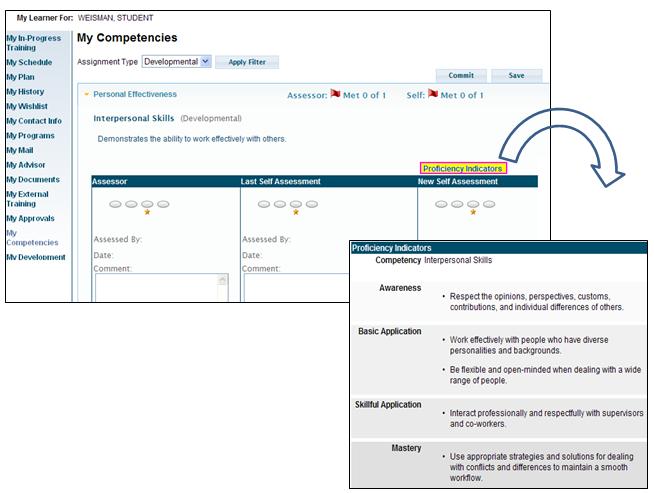In the blog on Creating Competency Groups and Competencies, I touched briefly on Proficiency Levels and Proficiency Indicators. In this three-part blog we’ll take a deeper dive and look at the thought processes that need to happen when first setting up your VTA system in anticipation of entering Competencies.
Part 1 (this blog) shows how Proficiency Levels and Proficiency Indicators appear to a student in Learner and emphasizes the importance of using terminology that leads to observable, measurable Indicators. Part 2 shows six examples of different Proficiency Level terms, where in Backoffice to set the enterprise number of Proficiency Levels, how to name and describe them and where to add Proficiency Indicators to a Competency. Part 3 explains how Site Specific Indicators are created.
If you are a VTA Administrator whose Competency Management system has already been set up, this blog may explain the decisions behind your enterprise Proficiency Levels and Indicators. For organizations planning on using the VTA Competency Management system, these blogs describe actions and choices around Proficiency Levels and Indicators.
Proficiency Levels provide the scale across which someone’s performance or competence is measured, such as, from novice to expert or from awareness to mastery. Proficiency indicators are the observable behaviors an assessor uses to objectively classify a student into a particular proficiency level.
For example, a competency titled “Crane Operation” may have an awareness level proficiency indicator such as, “Perform pre-startup safety check” while an advanced level proficiency indicator may read, “Plan critical and two-crane lifts”.
The illustrations above and to the right show a Self-Assessment screen in Learner with four Proficiency Levels (this is a system variable discussed in Part 2) defined. The Levels are listed in order of simple (e.g., Awareness) to complex (e.g., Mastery) so they are adaptable to students having varying levels of experience and responsibility.
Proficiency Indicators
Proficiency Indicators, shown in a Learner pop-up window (above, right), display a list of criteria for each Proficiency Level. Indicators play a critically important role by describing explicit standards for the student to achieve in order to be considered competent at each Proficiency Level. The important thing to remember about Indicators is they need to be written in observable or measurable terms and, in many cases, leading off with action verbs such as write, demonstrate, develop, implement, etc. Doing so tends to take the subjectivity out of the assessment process in contrast to when verbs such as understand, know, appreciate, etc. are used. And, because there may be multiple assessors for each competency, the baseline indicators students are evaluated against need to be as clearly and concisely written as possible to prevent biased or inconsistent results.
If you’ve not decided what Proficiency Level terms to use, refer to Part 2 for a table of examples.

